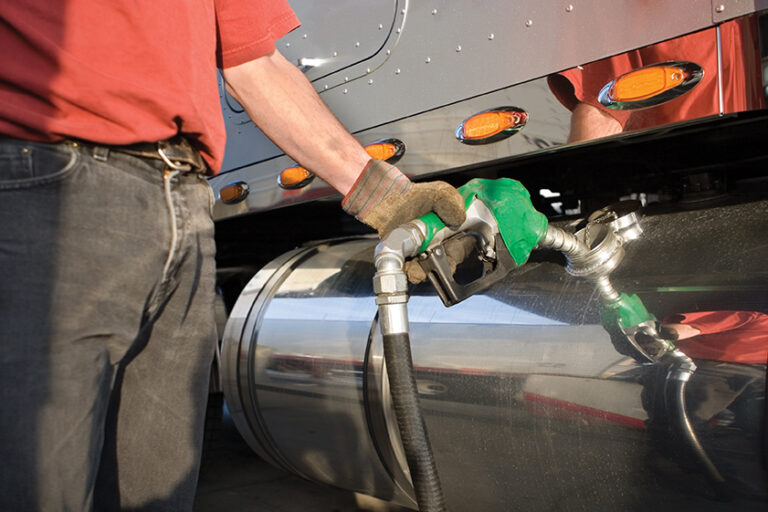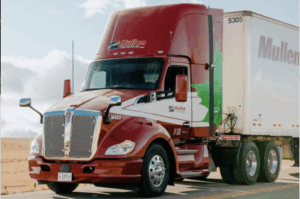Fuel discounts are good. So are fuel surcharges. If you’re an owner-operator, you’ll be able to quickly answer this simple question: What is your average fuel cost per gallon? If you can’t answer, you’re not doing a good job of managing your trucking business.
No business expense impacts the bottom line as much as the cost of fuel. A truck running 10,000 miles per month — not particularly difficult on highways with 65 to 75 mph speed limits — burns 1,667 gallons of fuel in the same month, at 6 mpg. At $2.39 per gallon, the national average price for a gallon of diesel fuel on Oct. 31, according to the U.S. Energy Information Administration (EIA) (eia.gov/petroleum/gasdiesel), it adds up to just shy of $4,000 per month in fuel cost.
A 5-cents-per-mile fuel surcharge, at the same 6 mpg, knocks 30 cents per gallon off the fuel price. At the end of the month, that’s worth $500 off of the fuel bill — a reduction of more than 12.5%.
About that fuel price. We’re entering an uncertain period for the petroleum industry after enjoying relatively low fuel pricing for several years. The reduction in travel due to COVID-19 restrictions has undoubtedly reduced demand for fuels, driving prices downward. As the country reopens, demand should increase, and prices will likely increase along with it.
Additionally, advances in the manufacture of hybrid and electric-powered vehicles, coupled with increased sales, could further impact fuel prices. Changes in government policy to restrict fracking and promote transition away from petroleum products may have an impact as well.
As diesel fuel prices rise, fuel surcharges should rise as well. What impact the changes will have on your bottom line depends to a great extent on the mpg your tractor achieves. That’s because the fuel surcharge is usually paid on a per mile basis. In some cases, it is paid as a percentage of the per mile freight rate, which equates to the same thing. The end result is that by increasing your mpg, you’ll decrease the number of gallons of fuel you’ll burn for that trip — without decreasing the fuel surcharge you’ll receive.
Using our prior example of an average nickel (5 cents) per mile fuel surcharge, applied to 10,000 miles per month, results in $500 extra to spend on fuel. But what if you could increase your fuel mileage to 7 mpg? You’d still receive the extra $500 in surcharges, but you’d be buying 1,429 gallons of fuel instead of 1,667 (238 fewer gallons). At the current price of $2.39 per gallon, that’s a savings of $568.82, on top of the $500 surcharge payment.
If you can achieve 8 mpg, your fuel consumption for 10,000 miles drops by another 179 gallons, while your fuel cost drops by another $426.
Granted, these examples call for some pretty drastic declines in fuel consumption. But remember, your total fuel consumption includes all the fuel burned, even while idling. If you could reduce idling, decrease your average speed by a few miles per hour and take greater advantage of fuel-saving technologies available for tractors and trailers, you might be surprised at how much you could improve your fuel mileage.
Other decisions could be impacted by fuel savings, too. For example, our example of a 2 mpg improvement nets about $995 per month additional cash. If you’re planning to upgrade your tractor any time soon, would an extra $995 per month help with the financing? True, you’d be spending your fuel savings on a truck payment, but you’d have newer equipment that, in theory, saves on maintenance costs and missed revenue due to downtime.
Perhaps the additional revenue could pay for an APU that helps eliminate idling in your current truck, or maybe the purchase of fuel-saving technology like trailer skirts, scoops and tails, or tractor tech like wheel covers and flow-through mud flaps. Or, maybe the additional bottom-line income would go home to your family and help with the bills.
No matter how you choose to use the additional income, fuel surcharges go farther when you reduce the amount of fuel you burn. As fuel prices go higher, it becomes even more important to make the most of fuel surcharges by reducing fuel consumption. It’s just good business.
Cliff Abbott is an experienced commercial vehicle driver and owner-operator who still holds a CDL in his home state of Alabama. In nearly 40 years in trucking, he’s been an instructor and trainer and has managed safety and recruiting operations for several carriers. Having never lost his love of the road, Cliff has written a book and hundreds of songs and has been writing for The Trucker for more than a decade.









Great article on not only poses a Cdl but also title of CEO,COO so run your truck as a business, do your homework and cost accounting. By the way have you factored getting disability insurance. What happens I you become disabled?